Coral brickscape
I’m a coral nerd and an unrepentant adult fan of LEGO bricks, so I figured why not attempt a completely instruction-free build of a squishy, curvaceous reef out of hard plastic 90° angles.
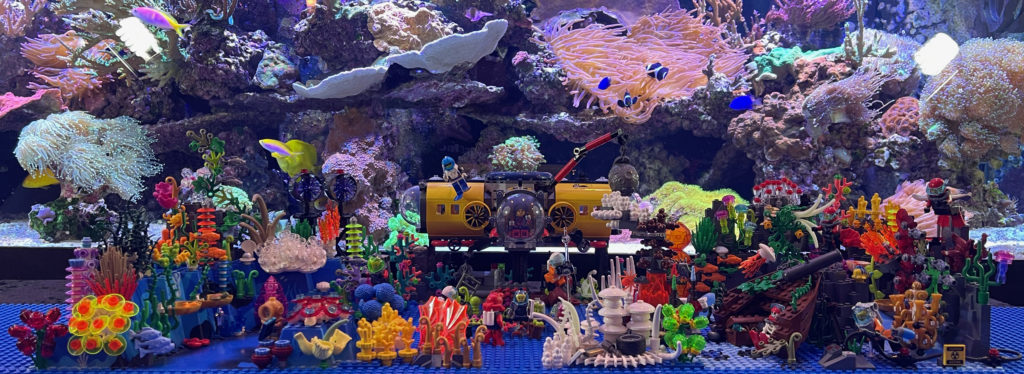
Certainly I get the irony of making a model of corals from non-biodegradable plastics, but maybe that’s the point (and part of the point of keeping a huge tank of actual corals): the need to create a microcosm of something that’s rapidly disappearing seems more urgent, even if it’s only a creative pastime.
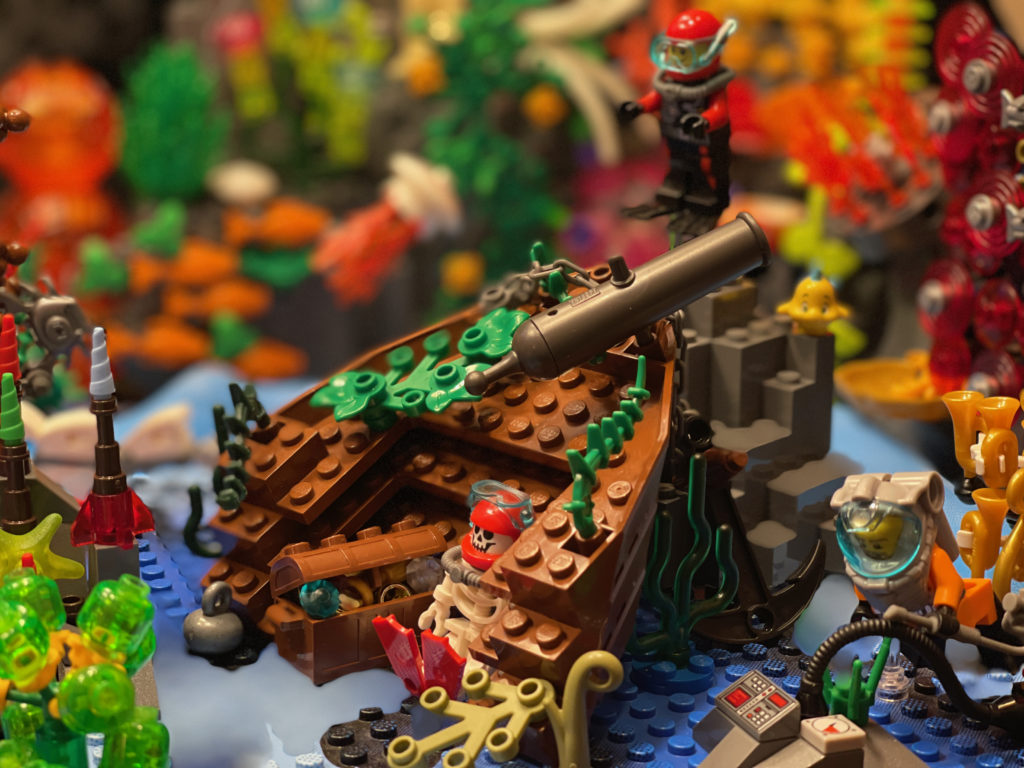
And what a pastime it was. Early on in my musings of how to do this I realized there was no way I could find the bricks I thought I needed just sorting through the 100,000+ loose bricks in the dozens of tubs and bags they were randomly collected in. This launched an effort at organization and general de-crufting that deferred the actual reef project for months.
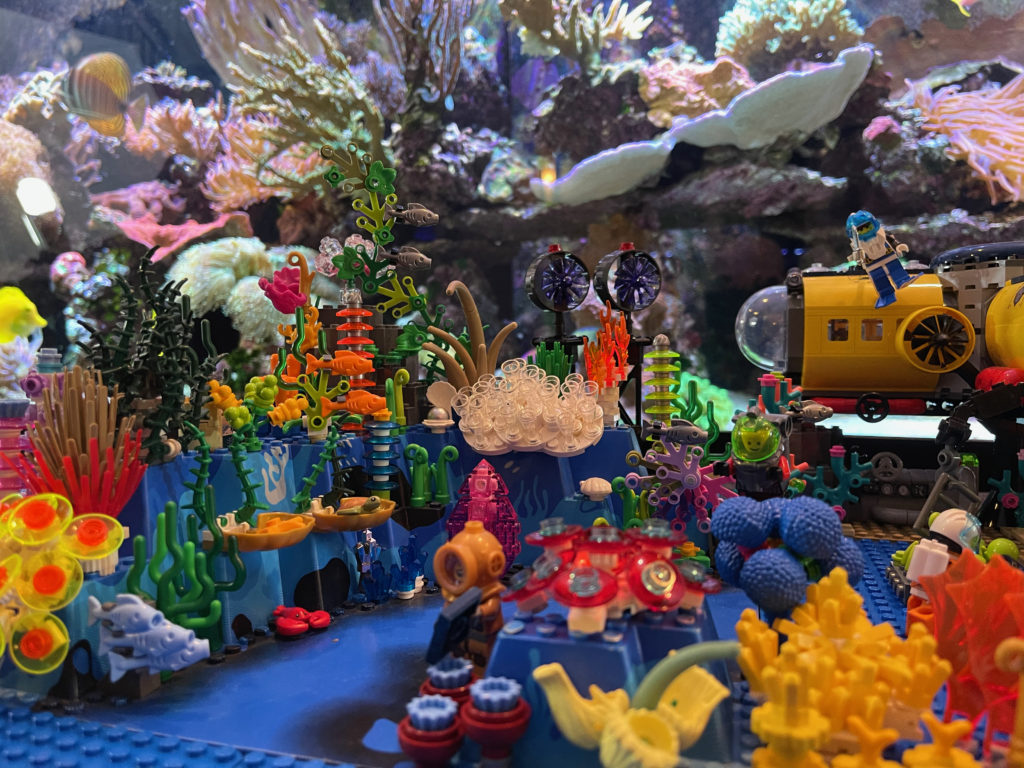
The sorting itself was, in a way, part of the design process. Touching every single brick we own (in every possible orientation, decontextualized from its originally-intended purpose) gave me a millisecond per brick to consider how it might be used to simulate the crazy shapes that reefs take.
And that was the real challenge; there’s nothing rectilinear about coral. If it isn’t a swaying mass of tentacles, polyps, and pulsing mouths it’s a bleached Iron Throne of jagged, fractal CaCO3. I took a lot of inspiration from techniques for making botanical models (plants, flowers, etc) but also from the advanced facade decorations included in LEGO modular architecture sets. Basically, I catalogued as many of the ways of getting bricks to assume odd or semi-random angles while still being affixed to one another. Didn’t hurt that I could just stare at my own tank of beasties for inspiration when I got stuck.
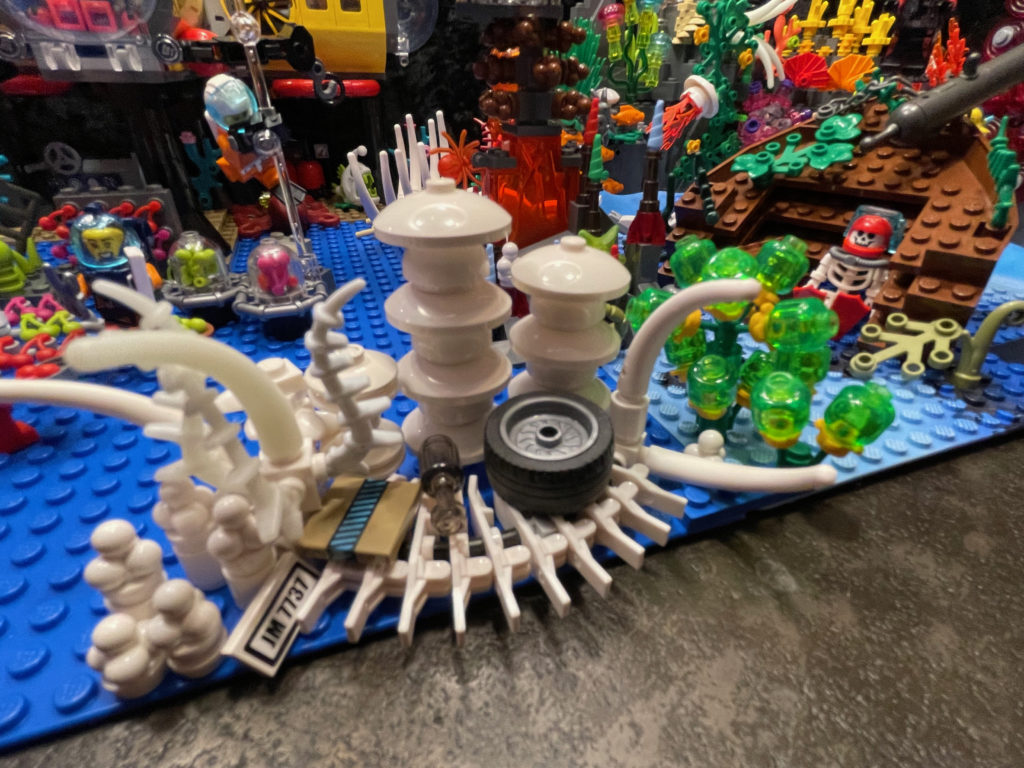
There is an actual LEGO coral brick, but I ended up not using it much as it’s really a distillation of what we generically think coral looks like. In the end it was far more fun to repurpose minifig hairpieces, radar dishes, trumpets, chalices, carrots and ice cream scoops. Mounting all that was mostly an exercise in SNOT (“studs not on top”) design, using nearly every brick made specifically for that purpose and a ton of techniques culled from the LEGO nerdweb.
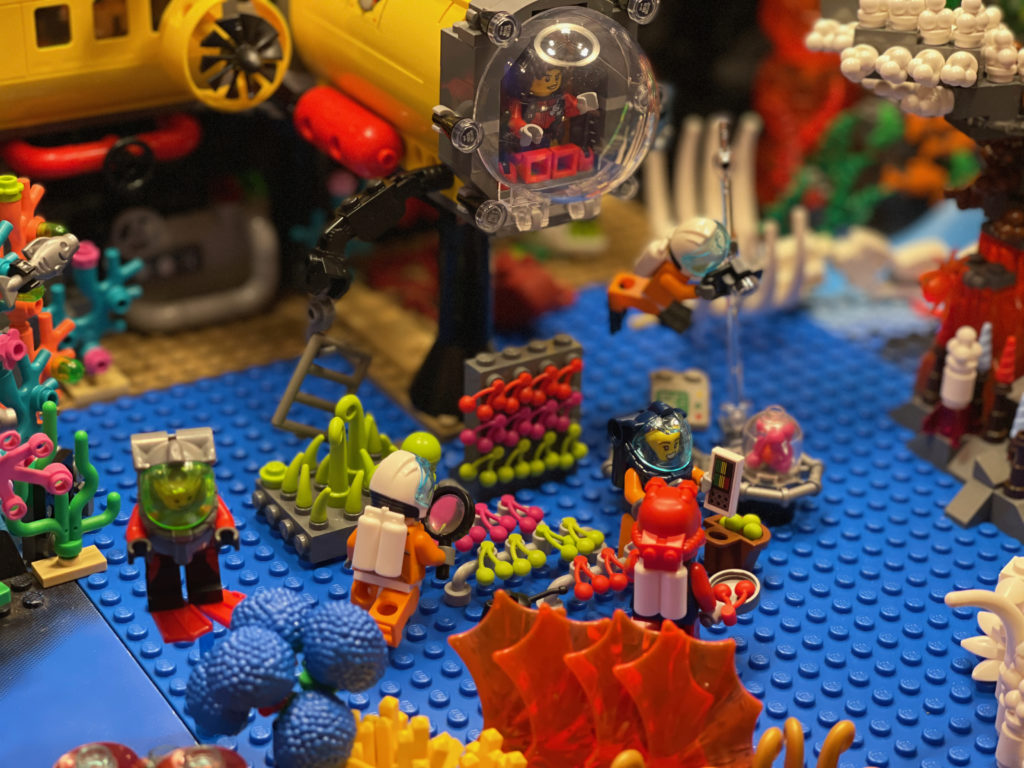
There’s a lot going on in this ecosystem. The main subdivisions left-to-right are a vibrant reef section, the marine science and bleached reef middle section, and the “all the things on the seafloor” section which includes a shipwreck, hydrothermal vent, and whale fall. Other items include a transoceanic fiber cable (with repair technician attempting to bring broadband to your continent), wreckage from Oceanic Flight 815, Aquaman fighting Black Manta, a couple shy mermaids, the Antikythera Mechanism, a diver as skeletonized as the whale, human trash in the bleached patch (including an actual broken piece of ABS LEGO plastic), and a steampunk Diver Dan. See if you can find them all. (Here’s the full set of photos at Flickr.)
It’s all now mounted on a lower shelf in my home library, part of a larger cityscape and sea. The ocean surface needs a lot of work, but for now I’m going to turn to the relative comfort and trance-like ease of building a set with actual instructions. Freeform and organic is a lot of work, you know?













